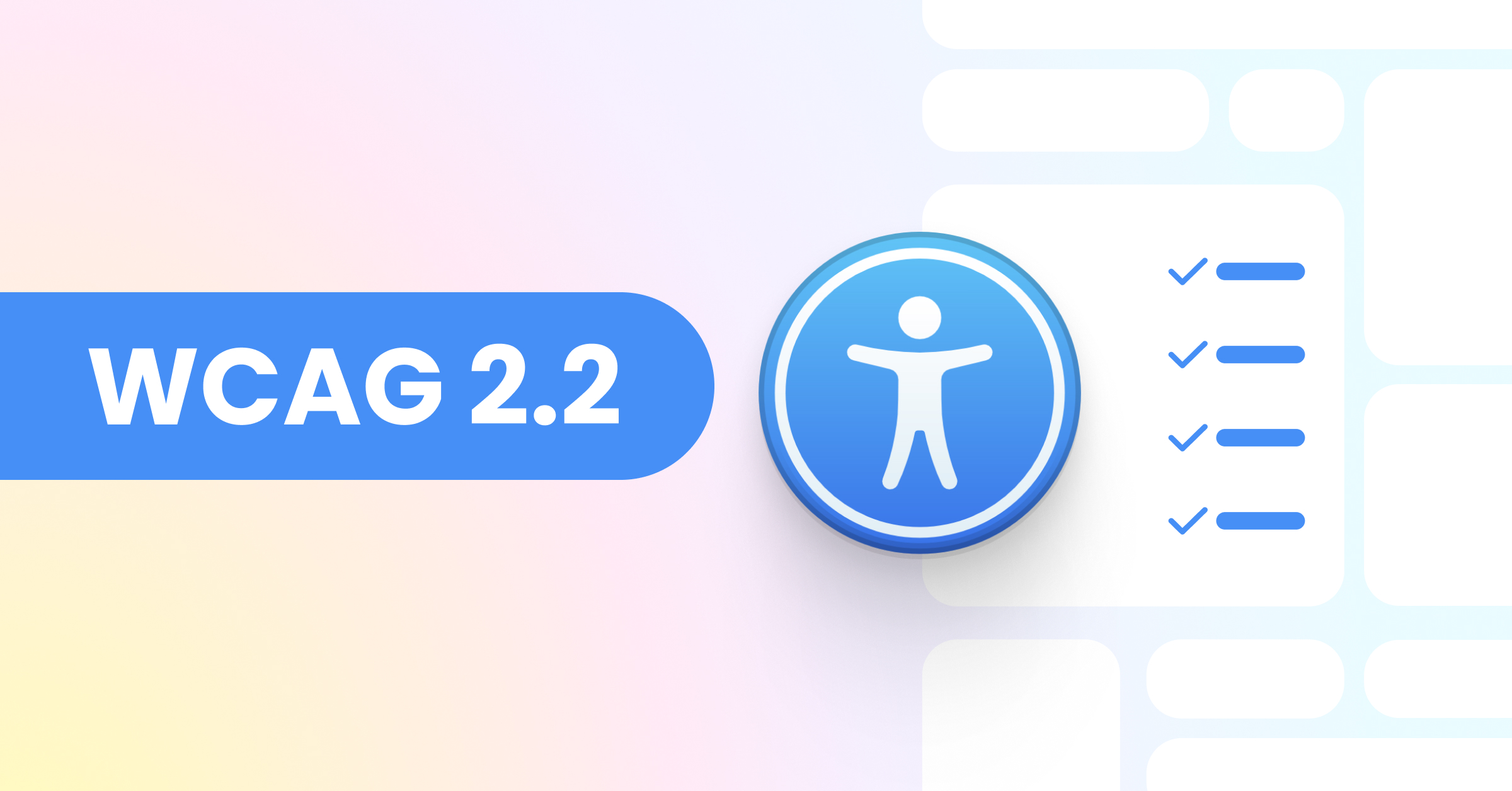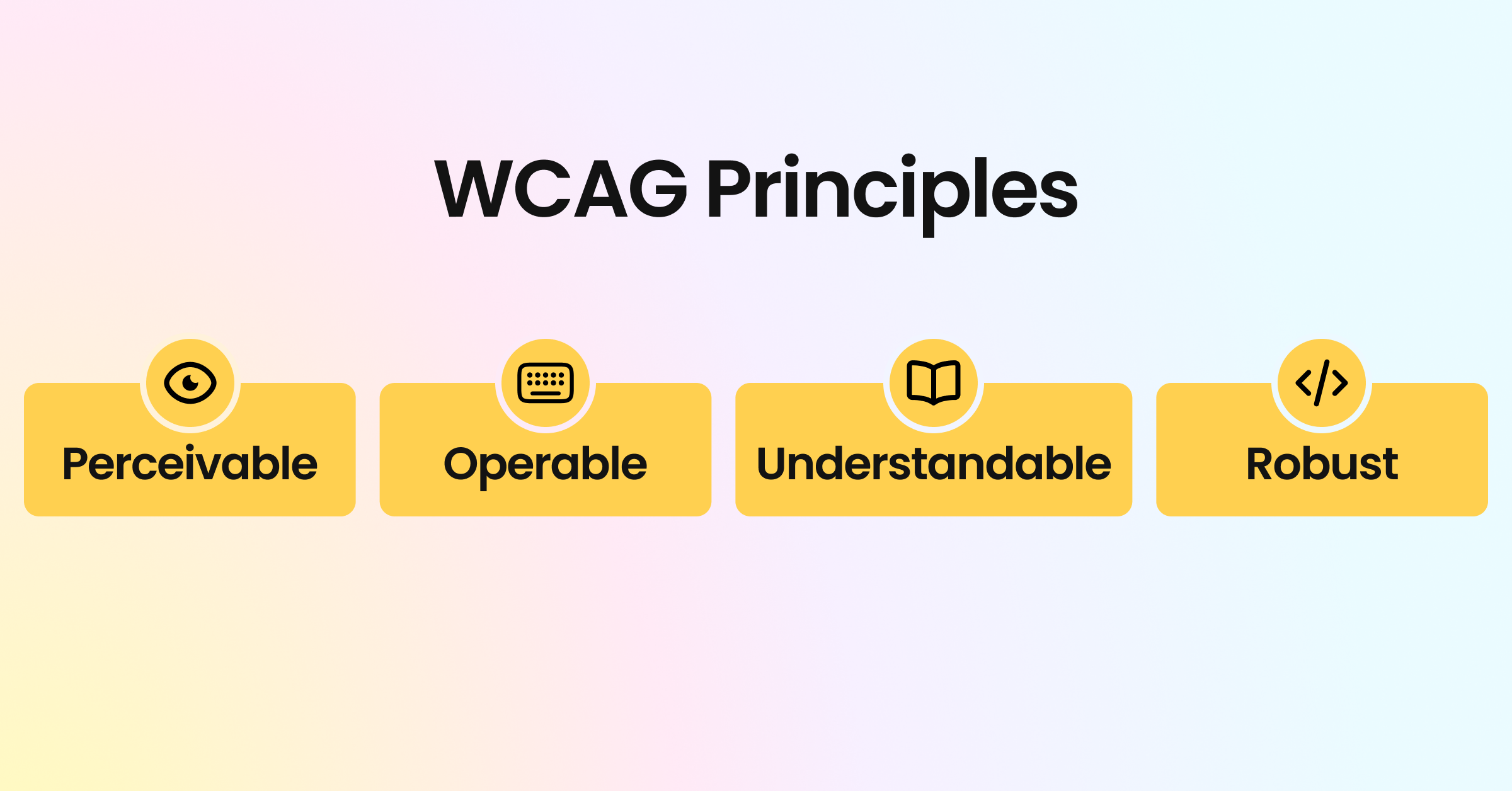WCAG 2.2: What applies now & what’s coming with WCAG 3.0
 WCAG 2.2 as the benchmark for digital accessibility
WCAG 2.2 as the benchmark for digital accessibility
The WCAG 2.2 define internationally recognised success criteria for the accessible navigation of websites, apps, and digital documents.
They form the basis for key regulations such as the European Accessibility Act (EAA).
You’ll find the perfect introduction to WCAG 2.2 in our article “The future is accessible: The ABC of WCAG 2.2”.
What are the WCAG guidelines and why are they important?
The Web Content Accessibility Guidelines (WCAG) were developed by the World Wide Web Consortium (W3C), the leading international body for web standards.
They define how digital content must be designed so that everyone can use it – whether with a screen reader, keyboard, smartphone, or visual impairment.
The WCAG are now the global benchmark for digital accessibility. They underpin national frameworks such as BITV 2.0 in Germany and the European Accessibility Act in the EU.
The development of WCAG – A Brief Overview
WCAG 1.0: The beginning (1999)
With WCAG 1.0, the W3C established for the first time how websites could be made usable for everyone – for example, by adding alternative text for images or using clear HTML structures.
At the time, the focus was mainly technical. True user-centred design was still far off, but the foundation was laid: accessibility became part of web standards.
WCAG 2.0: New principles and structure (2008)
For the first time, accessibility was approached systematically through four principles: perceivable, operable, understandable, and robust.
This shifted the focus from merely writing correct code to creating digital experiences accessible to everyone.
Example: Text must stand out clearly from the background, buttons must be reachable via keyboard, and videos should include subtitles.

WCAG 2.1: Focus on mobile use (2018)
Ten years later, the W3C responded to a changing digital world dominated by smartphones, tablets, and touchscreens.
WCAG 2.1 introduced new success criteria for touch gestures, visible focus indicators, and use in both portrait and landscape mode. It also strengthened the focus on people with visual or motor impairments.
For instance, buttons on mobile devices must be large enough to be tapped with a finger.
WCAG 2.2: The current standard (2023)
With WCAG 2.2, the guidelines were further expanded – this time with a clear focus on usability and everyday practicality.
New success criteria aim to reduce repetitive input, make focus areas more visible, and enlarge interactive elements to make them easier to click or tap.
A form that remembers user data or buttons that are not obscured are typical examples of these improvements.
This puts user needs more firmly at the centre – making WCAG 2.2 the defining standard for digital accessibility in Europe and beyond.
What does WCAG 2.2 include?
Focus 1: Reduced memory load
A key new success criterion (3.3.7) at Level AA is Accessible Authentication.
It ensures users don’t have to rely on memory to sign in or re-enter information.
Example: A login process must not require complex cognitive tests – such as deciphering distorted letters or identifying images (CAPTCHAs). Instead, passwordless methods, email codes or biometric logins should be possible.
Focus 2: Improved usability and focus management
WCAG 2.2 adds several new Level AA success criteria related to operability and navigation:
Focus indicators must remain visible – even when overlaid by elements like cookie banners (2.4.11 to 2.4.13).
Interactive targets such as buttons or links must be at least 24 × 24 CSS pixels (2.5.8 Target Size – Minimum).
The tab order must be logical and consistent, enabling screen readers and assistive technologies (e.g. braille displays) to interpret content correctly.
These requirements apply not only to traditional websites but also to mobile devices and web apps, where users often navigate via touch or keyboard.
Focus 3: Refined criteria and conformance conditions
WCAG 2.2 also clarifies existing success criteria and conformance conditions, making implementation and auditing easier – for example, within external or internal accessibility audits.
Accessibility compliance is still rated on three levels:
Level A – Minimum requirements
Level AA – Standard for legally required accessibility
Level AAA – Highest level, often not fully achievable
These levels correspond to EN 301 549, which is mandatory for public-sector procurement under the EU’s Public Procurement Regulation.
Why are the WCAG 2.2 important?
The WCAG 2.2 are much more than technical recommendations. They define measurable accessibility criteria for web design, user interfaces, and digital applications – from form labels and alt text to audio descriptions and sign language interpretation.
They create the foundation for inclusion and legal compliance – across public administration, e-commerce, education, and software development alike.
If you’d like to know how these standards can be applied in design practice, read our article on Accessible Design According to WCAG.
What new success criteria does WCAG 2.2 introduce?
WCAG 2.2 adds six new success criteria (mostly Level A or AA). These make interfaces easier, more consistent, and more accessible – especially for users with motor, visual, or cognitive impairments.
2.4.11 – Focus Not Obscured (Minimum): The visible keyboard focus must not be hidden by overlapping elements such as pop-ups or banners.
2.4.12 – Focus Not Obscured (Enhanced): Additional requirements for layered content; focus must remain fully visible, even in dynamic layouts.
2.4.13 – Focus Appearance: Defines contrast and shape of visible focus indicators, helping users identify the active element when navigating via keyboard.
2.5.7 – Dragging Movements: Features that require drag-and-drop must also be operable without a mouse or gestures – e.g. via arrow keys or buttons.
2.5.8 – Target Size (Minimum): Interactive elements like buttons or links must be at least 24 × 24 CSS pixels to ensure usability on mobile and for users with motor impairments.
3.3.7 – Redundant Entry: Users should not have to re-enter information already known to the site – for example, delivery addresses auto-filled from account data.
What will change with WCAG 3.0?
Goals and design principles of the next generation
WCAG 3.0, also known by its project name “Silver”, is still in draft form. The W3C is pursuing a more holistic approach:
Accessibility will no longer be measured solely by technical compliance but will also reflect real user experience.
The new guidelines aim to be more flexible – adapting to modern technologies such as artificial intelligence, augmented reality, and voice control.
The W3C is responding to the digital shift: where websites were once central, today accessibility spans entire digital ecosystems – from apps and smart devices to virtual reality.
The new conformance model
A major change: WCAG 3.0 aims to replace the rigid A/AA/AAA levels.
Instead, a points-based system is being discussed, allowing more granular evaluation – no more simple pass/fail outcomes, but a scale from partial compliance to best practice. This should make progress more transparent and continuous improvement measurable.
How evaluation will change
With WCAG 3.0, usability takes an even stronger role.
In addition to technical criteria, qualitative aspects such as intuitiveness and clarity of content will be considered.
The new guidelines will also:
be easier to understand, even for non-technical stakeholders,
address a wider range of technologies,
and better combine practicality with measurability.
What this means for organisations
It will still take several years before WCAG 3.0 is officially released.
But one thing is already clear: accessibility is evolving from a compliance issue into a core quality feature of digital products.
Organisations already aligning with WCAG 2.2 are building a solid foundation – and will be well-prepared for the transition to WCAG 3.0.
Implement WCAG 2.2 today with WCAG 3.0 in mind
WCAG 2.2 currently represent the binding standard for digital accessibility.
Businesses, public authorities, and agencies should now review and update their websites and applications – not only to meet legal requirements but to achieve genuine inclusion.
Would you like to know how to make your website accessible step by step?
Then use our Checklist for Accessible Web Design and check whether your online presence meets all key WCAG 2.2 criteria.
Does your website comply with the WCAG 2.2 criteria? Find it out with a free website check.
)
